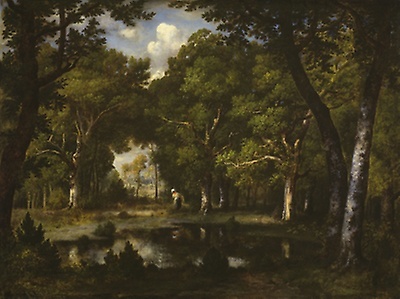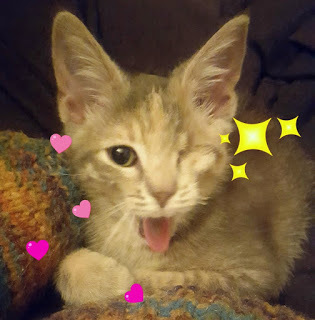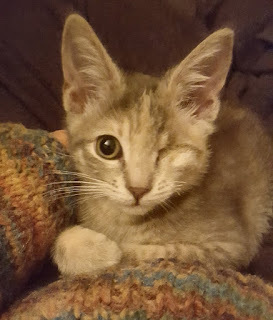Deborah J. Ross's Blog, page 73
January 14, 2019
Lace and Blade 5 Author Interview: Pat MacEwen
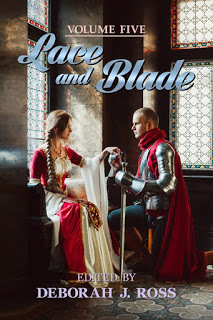 From lands distant or nearby, familiar or utterly strange, historical or imaginary, from ancient times to the Belle Époque comes a treasury of luscious, elegant, romantic fantasy. Come with us on a journey through time and across boundaries, inspired by the longings of the heart and the courage residing in even the meekest person.
From lands distant or nearby, familiar or utterly strange, historical or imaginary, from ancient times to the Belle Époque comes a treasury of luscious, elegant, romantic fantasy. Come with us on a journey through time and across boundaries, inspired by the longings of the heart and the courage residing in even the meekest person.The release date is Valentine's Day 2019, but you can pre-order it now:
Kindle: https://amzn.to/2PBzyj6
ePub: https://www.books2read.com/u/bwYJwP
I think I ran across Pat MacEwen at our local science fiction convention, BayCon, but didn't really get acquainted with her work until I edited two novels, Rough Magic and The Dragon's Kiss for Sky Warrior. I look forward to many more.
Deborah J. Ross: Tell us a little about yourself. How did you come to be a writer?Pat MacEwen: I’m told I started when I was four. I would use crayons to draw the story, and then I would tell it. Often, those stories featured my favorite toy, a rubber giraffe missing one foot the dog had chewed off. In my stories, there was always a grand adventure involved in how that happened because I knew even then that heroes wind up scarred by life, win or lose. Some of that may be genetic – my father’s people were bards and seanachies for the Campbell clan for centuries, and my mother’s people include lots of preachers and teachers. We’ve always had a tale to tell.
DJR: What inspired your story in Lace and Blade 5?PM: The fairy queen Sathyllien came out of my first novel, Rough Magic, where she does forensic work on modern murders involving magic. She has a history stretching back over centuries, and a habit of using Elizabethan insults. I wanted to find out more about that period in her life, and her relationship with a human queen of great renown. So I started with a basic problem – a murder victim who’s been concealed by being rendered invisible. And I tied it to another fae and bits of hidden history concerning the Virgin Queen. It so happens that lots of information has survived about her 40th birthday party, organized by the original “Nosy” Parker, then Archbishop of Canterbury, so I set it then and there.
DJR: What authors have most influenced your writing? PM: Poul Anderson, for one. He wrote fantasy with large dollops of history, and he wrote hard science fiction as well, creating all these rich and varied cultures and characters along the way. His wife, Karen Anderson, was a scholar and historian in her own right, and always deeply involved though she was only named as an official co-author of The King of Ys. So many others - Ursula LeGuin and Marion Zimmer Bradley were also what I would call tapestry writers, weaving all sorts of disparate threads and surprising colors into an astonishing whole. I greatly admire Elizabeth Moon and Lois McMaster Bujold for similar reasons, and of course Sir Terry Pratchett. And now there’s Nora Jemisin.
DJR: What’s the most memorable fan mail you’ve ever received?PM: I had a novella, The Lightness of the Movement, come out in F&SF – it’s an alien sex story, at its heart, about a human grad student who puts on a rubber suit and pretends to be one of the aliens she’s studying on another planet. Their reproductive patterns are not like ours. The males maintain gardens where they raise their hatchlings on fruit laced with memory RNA, and use the children’s dances as displays to attract more egg-laying females. It got panned by a couple of major critics, but I got a note from a reader who told me how much she loved it, and had subscribed to the magazine because of it, and wanted to friend me on FaceBook. That really made my day, at a point when I was feeling discouraged about the whole thing thanks to those reviews and, well, life. And then the story wound up on the Tiptree Honors List and was a finalist for the Sturgeon Award that year so (in part thanks to that one reader, who so clearly got it), I’m still writing.
DJR: How does your writing process work?PM: It’s my habit to collect odd bits of history, science, geography and such, so I have a grab bag I can reach into and pull out something fun to work with. I’ll start with an idea, an invisible corpse, for example, and then figure out where it is, and who put it there and why, and why it needs to be invisible. Then I pull out or create a character(s) and put them to work on those very same questions. The scenes get written down as they become clear to me. Then I have to go back and fill in the gaps, and fit each piece into the story structure. Often enough, I don’t know where the heart of the story is until I’ve written most of it. So then I have to reshape this and that, and prune away as much as I can. This story included two characters from previous work – the fairy queen Sathyllien, and the young hunchback Robert Cecil, whose father was Elizabeth’s chief counsel and stalwart supporter. Once they met, things really started moving.
DJR: What have you written recently? What lies ahead?PM: Currently working on another modern day novel concerning that fairy queen, Sathyllien, and on a new/old project involving some highly speculative genetic engineering and… televangelists. Oh, and murder. Then I’d like to come back and explore the rest of that Elizabethan mystery, the before and after of what happens here in ‘Til Death Do Us Part.
DJR: What advice would you give an aspiring writer?PM: Read. Read everything. Fiction. Non-fiction. All genres – at least sample some of whatever they are. You might be very surprised by what grabs you, even in categories that held no appeal before that. Read the good stuff, of course, but don’t think you’re wasting your time by reading bad stuff either – look at why it doesn’t work, at least for you. That will teach you at least as much as the good stuff does. The other half of the job, of course, is to write. Do that the same way you read. Try lots of things, from poetry to journaling to nonfiction articles, from flash fiction on up to epic sagas. Put in your million words and then some. Figure out where your strengths lie, and get yourself into a good critique group, or find individual beta readers who can give you honest feedback and know their craft.
DJR: Any thoughts on the Lace and Blade series or this being its final volume?PM: I’m going to miss it. The ‘lace’ and ‘blade’ components set the series apart from other fantasy anthologies by emphasizing a certain elegance of tone and style and content. There’s rapier wit as well as rapiers themselves, and far fewer broadswords. I have no complaints about other approaches, mind you, but the cavalier viewpoint has its own special
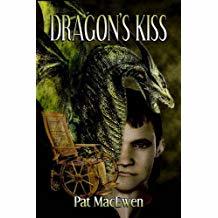 Pat MacEwen is an anthropologist. She works on bones from archaeological sites and does independent research on genocide, having worked on war crimes investigations for the International Criminal Tribunal, and done CSI work for a decade. Oddly enough, she was once a marine biologist at the Institute of Marine and Coastal Studies at USC. She has two novels out: Rough Magic, a forensic/urban fantasy, and Dragon’s Kiss, a YA fantasy about a crippled boy who finds he can talk to dragons but people? Not so much. She writes mystery, horror, science fiction, and fantasy. Her work has appeared in a Year’s Best SFanthology. It has also been a finalist for the Sturgeon Award, and made the Tiptree Honors List. Her hobbies include exploring cathedrals, alien-building via nonhuman reproductive biology, and trawling through history books for the juicy bits.
Pat MacEwen is an anthropologist. She works on bones from archaeological sites and does independent research on genocide, having worked on war crimes investigations for the International Criminal Tribunal, and done CSI work for a decade. Oddly enough, she was once a marine biologist at the Institute of Marine and Coastal Studies at USC. She has two novels out: Rough Magic, a forensic/urban fantasy, and Dragon’s Kiss, a YA fantasy about a crippled boy who finds he can talk to dragons but people? Not so much. She writes mystery, horror, science fiction, and fantasy. Her work has appeared in a Year’s Best SFanthology. It has also been a finalist for the Sturgeon Award, and made the Tiptree Honors List. Her hobbies include exploring cathedrals, alien-building via nonhuman reproductive biology, and trawling through history books for the juicy bits.
Published on January 14, 2019 07:56
January 11, 2019
Short Book Reviews: Explosions and Loaded Guns, Oh My!
They Promised Me the Gun Wasn't Loaded, by James Alan Gardner (Tor)
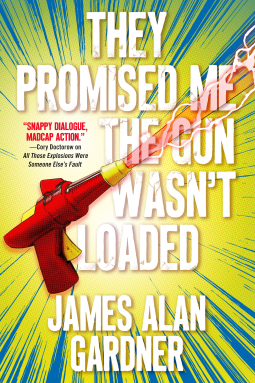
Sequels are always challenging: how much backstory to include, how much to omit; how to bring new readers up to speed without boring those who’ve just finished previous volumes; and most of all, how to keep the series fresh and engaging. They Promised Me succeeds on every measure. If anything, it’s more entertaining and has even more heart than All Those Explosions Were Someone Else’s Fault.
In Gardner’s intriguing world, people acquire Dark and Light superpowers, Dark by paying obscene sums of money for immortality (and surrendering any control over their form this “gift” takes – vampire, ghost, demon, or something incredibly squicky and nameless). Light sort of happens to folks, as it did in the first installment, turning our current protagonist, hockey player and science student Jools, into Ninety-Nine, the human Olympic-level best at everything (including WikiJools, encyclopedic knowledge resident in her mind).
Throw into the mix an array of Mad Geniuses and superhero/Mad Genius Robin Hood (who steals from the rich but can’t give to the poor without revealing his secret identity) and his Merry Men, a supernatural bazooka claimed by the villain in the first book and sought after by all and sundry, and a handful of unexpected explosions and side-effects, and the result is a delightfully wacky first-person narrative. It’s got an immense amount of heart, too, because now that the basic rules of this world are established, Light/Dark sides drawn, and action moving right along, the choices Jools makes and the sacrifices she’s willing to make for the people she loves are really what the story is all about.
I hope this one-two switcheroo in point of view character follows through in subsequent volumes, and as I would love to get to know the other flatmates/superheroes in the gang as their lives unfold.
Highly recommended, but do read All Those Explosionsfirst for maximum enjoyment.

Published on January 11, 2019 01:00
January 9, 2019
Today's Moment of Art
Published on January 09, 2019 01:00
January 7, 2019
Lace and Blade 5 Author Interview: Gillian Polack
 From lands distant or nearby, familiar or utterly strange, historical or imaginary, from ancient times to the Belle Époque comes a treasury of luscious, elegant, romantic fantasy. Come with us on a journey through time and across boundaries, inspired by the longings of the heart and the courage residing in even the meekest person.
From lands distant or nearby, familiar or utterly strange, historical or imaginary, from ancient times to the Belle Époque comes a treasury of luscious, elegant, romantic fantasy. Come with us on a journey through time and across boundaries, inspired by the longings of the heart and the courage residing in even the meekest person.The release date is Valentine's Day 2019, but you can pre-order it now:
Kindle: https://amzn.to/2PBzyj6ePub: https://www.books2read.com/u/bwYJwP
My introduction to the work of Gillian Polack was The Wizardry of Jewish Women, a concoction of pink tutus, sarcasm, amulets and bushfires. and oh yes, Jewish women with and without magic, set in Australia. I was instantly literarily smitten.
Deborah J. Ross: Tell us a little about yourself. How did you come to be a writer?Gillian Polack: I love telling people that when I was eight I stopped in front my Grade Three Classroom - for I was in Grade Four and had just been moved to the Big School to study with Mr Remenyi – and said to the empty air, “I’m going to be a writer. I’ll need another job because I won’t make enough money to live on.” My other job was going to be in history, though I flirted with other careers from time to time. I have no idea how I could have known that much about myself or the writing world when I was eight. I suspect Mr Remenyi was a part of it, for he taught us Christina Rosetti’s work and it was love at first reading. I knew I wanted readers to react to my work with the same voraciousness we reacted to her poems.
DJR: What inspired your story in Lace and Blade 5?GP: I had just been diagnosed with glaucoma and told it was not responding to treatment. I spent three months talking myself through the emotions of it. This story was to remind me that blindness is not going to stop me being myself and that I need to find the people who will see that in order to lead a happy life in future. This story, then, is my declaration to the world about the future I’m carving for myself.
DJR: What’s the most memorable fan mail you’ve ever received?GP: My two treasures are a poem written in response to my first novel by an elderly lady who’s daughter gave her a copy, and a scribbled “Thank you” from an adult student who had given up reading. She had been curious about my writing because I talked about it in class and she is now living in the world of books again.
DJR: What have you written recently? What lies ahead?GP: Right now I’m writing a novel that has much talking, PTSD and analysis of how story affects the world. It tells of superheroes and alternate universes and how the stories we choose for our lives can change who we are.My next novel to be published will be out in early 2019 and is called The Year of the Fruitcake. It’s about aliens on Earth, about judgement, about friends who save each other’s souls when life becomes tough and is one of the very rare novels told from the point of view of a perimenopausal woman.
DJR: What advice would you give an aspiring writer?GP: Discover who you are and how this affects your writing dreams. Never stop discovering who you are and how this affects your writing dreams.
DJR: Any thoughts on the Lace and Blade series or this being its final volume?GP: I am very honoured to be in it and very sad it’s at an end. I love the way the Lace and Blade stories have developed to give more voices to what used to be Sword and Sorcery. We have wider choices in our fantasy adventure reading because of it. The world is a richer place for those choices.
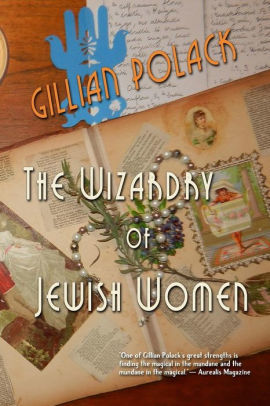 Dr. Gillian Polack is a writer and historian, and describes herself as “rather Australian.” She studied the French Revolution as an undergraduate, then advanced to the Middle Ages for her next couple of degrees: this story has been lurking a long time. Gillian still does a bunch of research (some of which is not terribly obscure) but she most writes novels (Langue[dot]doc 1305, The Wizardry of Jewish Women, The Time of the Ghosts) that use history, science fiction, fantasy and Australia in more or less equal measure. She has recently had a short story collection published (Mountains of the Mind).
Dr. Gillian Polack is a writer and historian, and describes herself as “rather Australian.” She studied the French Revolution as an undergraduate, then advanced to the Middle Ages for her next couple of degrees: this story has been lurking a long time. Gillian still does a bunch of research (some of which is not terribly obscure) but she most writes novels (Langue[dot]doc 1305, The Wizardry of Jewish Women, The Time of the Ghosts) that use history, science fiction, fantasy and Australia in more or less equal measure. She has recently had a short story collection published (Mountains of the Mind).
Published on January 07, 2019 01:00
January 4, 2019
Short Book Reviews: A Vaccination Medical Thriller
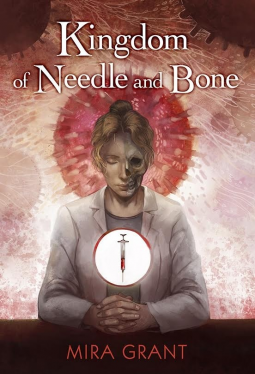
Kingdom of Needle and Bone by Mira Grant (Subterranean Press) belongs in the tradition of
epidemic thrillers, always a favorite of mine for their medical neepery. In this story, a measles-like a virus (“Morris’s Disease”) results in a loss of immunity to all pathogens. Besides the illness itself, with its fever, rashes, and so forth, the patient’s immune system loses the ability to “remember” being exposed to any other infection. Therefore no immunization to any disease gives protection. The mortality rate from this disease is very high, but worse yet is that the survivors are left without the ability to fight off future infections of any type. The only way they can survive is by complete quarantine, which figures prominently in the story.
The story begins with journalistic descriptions of Patient Zero, her fatal illness, and the spread of the disease, which is highly contagious and easily spread by contact with inanimate objects such as door knobs. A more personal view of the unfolding catastrophe comes through the point of view of that child's aunt, Dr. Isabelle Gauley, a physician who later devises a strategy to save humankind from the epidemic. Some medical thrillers jump from one point of view to the next, showing the many different and varied experiences as characters either succumb to whatever plague has arisen or take part in finding a solution. By focusing on just one character who has a personal relationship to the first victim and who also has complicated relationships with other members of her family, Grant skillfully sets up the surprising twist at the end. Cataclysmic historical events — like the Black Plague of the 14th Century CE — affect multitudes but can be emotionally remote unless dramatized through the lives of individual characters. Grant achieves both the world-changing nature of a pandemic and the intimate journey and ultimate personal responsibility of a small set of characters.
One of the most interesting aspect of this story, a biting social commentary on public issues today, is the question of personal bodily autonomy. Widespread refusal to vaccinate children lowers herd immunity to the point that communicable diseases easily spread. We see that today in unprotected populations with outbreaks of preventable diseases like measles, whooping cough, and polio. Faced with a high mortality rate from highly infectious Morris's Disease, public health authorities in Kingdom of Needle and Bone mandate immunization with rare medical exceptions. That raises the question about which principle takes precedence: the individual right of self-determination or the health and the very lives of the community, especially those who are immunocompromised and cannot be vaccinated. The central character, Dr. Gauley, argues:
“There are always going to be people who insist that vaccination is a personal choice, and that if we take that choice away, we must necessarily take other choices away — that the right to refuse a vaccine is the same as the right to refuse to donate a kidney, or the right to say that no one else is allowed to use your body as a life support system without your full and knowing consent.”
Following the principle of unintended consequences, pro-vaccination public health officials find themselves unwillingly allied with anti-abortion forces who see both as a violation of bodily autonomy. But where does personal liberty end and survival of the human species prevail?
This thoughtful medical thriller adds a nuanced moral perspective without bashing the reader over the head with any particular viewpoint, and while engaging the reader in a fast-paced, absorbing read.
The usual disclaimer: I received a review copy of this book, but no one bribed me to say anything about it.

Published on January 04, 2019 01:00
January 2, 2019
Today's Moment of Art
Published on January 02, 2019 01:00
January 1, 2019
Happy New Year: 2019 Intentions, Goals, and Wishes
 I'm not big on resolutions, New Year's or otherwise. More often than not, all they do is set me up to fail or put me in competition with others, and who needs that? However, I do see a great deal of value in taking some time to clarify where I'm going in my life, if it's where I want to be going, and what I'd like to see different.
I'm not big on resolutions, New Year's or otherwise. More often than not, all they do is set me up to fail or put me in competition with others, and who needs that? However, I do see a great deal of value in taking some time to clarify where I'm going in my life, if it's where I want to be going, and what I'd like to see different.Years (as in, decades) ago, a friend suggested making a list of goals instead of resolutions, and to break them down into 1-year, 5-year, 10-year, and lifetime goals. I did that for quite a while, and I still have the notebook I kept them in. It's fascinating to look back at what I thought I wanted, 30 years ago -- what I have achieved, what I no longer want, and what is no longer possible.
Along the way, I realized that some of these things were within my power to achieve, but others were not. I might long for them, but I could not bring them about, or not entirely by my own efforts. For instance, finishing a novel or studying Hebrew are things I can choose to do, but my children being happy, however much I might desire to see that come about, is not something I myself can create. These things are wishes, not goals. Of course, many things are both. On my list is to write a work of enduring value -- I can write the best stories that are in me, but how they are received and how they endure the test of time is another matter entirely. I have no say over that.
For 2007, the year I turned 60:1 year goals:Finish (a specific book I was working on)Transfer family videos to DVDCelebrate becoming a crone
5 year goals:Keep writing good stuff
10 years/lifetime:
Be active and happyDo something activist and outrageous
As I wrote down goals and wishes, year after year, I found that they changed in other ways. The specifics tended to be resolved or discarded, but things emerged that were more general and had more to do with quality and spirit than measurable achievements. An example -- writing something that would speak to people long after I'm gone as opposed to selling a novel or selling a particular novel -- shows this change. The farther out in time the goals/wishes, the less they resembled "resolutions." I've started to think of them as intentions instead.
Yet, the universe does not cooperate with our best intentions. I can wish for and intend to have a year that is one way but get presented with situations and challenges I had no way of anticipating and end up with something quite different, marvelous or heart-breaking. Part of the shift from resolutions to intentions is the introduction of flexibility, of a suppleness of response to whatever life brings. Life is not limited by my imagination (or my fears). It is an adventure, not a fixed syllabus.
For 2019, the year I will turn 72, my intentions are:1 year intentions:Write well most daysExercise well most daysMake music most daysLet the people I love know how precious they are to me
5 years/10 years/lifetime:Keep writing good stuffLive a happy lifeBe of service to others
My wishes are:A more compassionate worldA return to political sanityHope for the devastation of global warmingSaving the most vulnerable people from poverty and climate change
Photo by Cleo Sanda (1962-2012), may her memory be for a blessing.

Published on January 01, 2019 01:00
December 31, 2018
Lace and Blade 5 Author Interviews: Anne Leonard
 From lands distant or nearby, familiar or utterly strange, historical or imaginary, from ancient times to the Belle Époque comes a treasury of luscious, elegant, romantic fantasy. Come with us on a journey through time and across boundaries, inspired by the longings of the heart and the courage residing in even the meekest person.
From lands distant or nearby, familiar or utterly strange, historical or imaginary, from ancient times to the Belle Époque comes a treasury of luscious, elegant, romantic fantasy. Come with us on a journey through time and across boundaries, inspired by the longings of the heart and the courage residing in even the meekest person.The release date is Valentine's Day 2019, but you can pre-order it now:
Kindle: https://amzn.to/2
PBzyj6ePub: https://www.books2read.com/u/bwYJwP
I became acquainted with Anne Leonard through a serendipitous connection with a mutual writer friend and was delighted with her submission to this anthology.
Deborah J. Ross: Tell us a little about yourself. How did you come to be a writer?Anne Leonard: I started writing seriously when I was 14 and haven’t stopped (although there have been some hiatuses). I got an MFA in fiction and just kept chugging along. When I finally sold a novel, Moth and Spark, I was 44. I’ve always gravitated to novels as a form and have only become really serious about short fiction in the last few years. I’m driven by language - I love words, and bad prose will make me give up something I’m reading even if there’s an interesting plot. I read in many genres and try to learn from them all.
DJR: What inspired your story in Lace and Blade 5?AL: “Fire Season” was originally started after a visit to Istanbul, because I wanted to write a story about a djinni. The original inspiration was pictures of California wildfires. I wrote it, submitted it a couple times, then let it sit. Then a California wildfire hit my community hard (a year later, people still don’t have their homes back), and I tore the story apart and started over with a greater sense of what fires really do. It was grimmer but much more authentic. By that time I knew more about how to write a short story, too, which was another impetus for revision.
DJR: What authors have most influenced your writing? AL: It’s a pretty endless list, because I am always paying attention to how other writers work. But most of the strongest influences are probably the authors I read as a kid and teen. I only recently realized just how much Ray Bradbury has shaped my work. Stephen King has been an influence for sure. As a fantasy novelist, I have been influenced by Tolkien and Le Guin. Shakespeare continues to be influential. [Joseph Conrad's] Heart of Darkness, problematic though it is, is a book I come back to pretty frequently. I sometimes read poetry to kick my mind into gear, and that’s whoever I’m in the mood for at the time.
DJR: How does your writing process work?AL: I’m a “pantser.” I have tried all sorts of methods of outlining, to no avail. I recently read Stephen King’s On Writing, where he uses the metaphor of writing as uncovering a fossil, and that really fits for me. Part of the pleasure and fun of writing is when my characters take me places I hadn’t anticipated. Usually it’s an image and a few words that get me started, rather than “I’m going to write about X.” On the day to day basis, I try to write every day but if I get really stuck I don’t beat myself up over it, and I read a book or take a walk or enjoy a movie instead. I talk my plot and character problems out with my husband or other writers. I revise constantly. The method of writing a really messy first draft and fixing it later doesn’t work for me because if I don’t take the time to see what I have, I’ll write a bunch of crap that has to be cut later without giving me anything new to hold onto.
DJR: What have you written recently? What lies ahead?AL: I’m in the final revision round of a fantasy novel about a tyrannical and abusive king and, as my agent says, “the people who want him dead.” The characters include a middle-aged woman resistance leader, a soldier’s daughter avenging her unjustly executed father, and the king’s sons (who oppose him). There’s also a backstory about the queen, who disappeared a dozen years earlier. On one level the novel is a story about the hell of living with an abuser and on another it’s about how people find their strength to resist injustice.
DJR: What advice would you give an aspiring writer?AL: If you are lucky enough to have good teachers, listen to them, especially when they make you mad. There’s a good chance that anger means they’re right. Persist. Read widely and outside the genre you write in. Find good critique partners, and revise ruthlessly. That scene you’re holding onto because you love it even though it doesn’t fit - it has to go. Sorry.
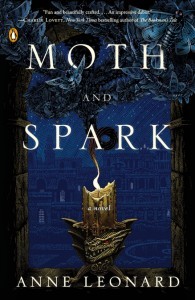 A lawyer and mediator, Anne Leonard is the author of the fantasy novel Moth and Spark. She also has an MFA in Fiction Writing and a PhD. in English literature. “Fire Season” was first drafted after a visit to Istanbul and substantially revised after wildfires burned through many communities near her home. She lives in Northern California with her family and two cats.
A lawyer and mediator, Anne Leonard is the author of the fantasy novel Moth and Spark. She also has an MFA in Fiction Writing and a PhD. in English literature. “Fire Season” was first drafted after a visit to Istanbul and substantially revised after wildfires burned through many communities near her home. She lives in Northern California with her family and two cats.
Published on December 31, 2018 01:00
December 30, 2018
Welcome, Freya! (Kitten Endorphin Alert)
Published on December 30, 2018 11:37
December 29, 2018
Kitten Video 12-2-2018
We recently acquired a kitten from the local animal shelter. She's about 9 weeks old, and had one eye removed due to an injury. So of course her name is Freya, wife of Odin. (From all accounts, Freya was the ultimate party girl.) She's still settling in, isolated in my office. My daughter "The Kitten Whisperer" took this footage of me playing with her. This is the day after Freya arrived, so she's still a bit hand-shy. Since then she's become much more bold in initiating physical contact with her humans. Enjoy!

Published on December 29, 2018 16:27



